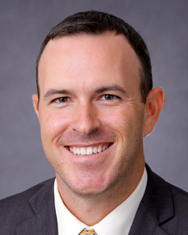The sports medicine experts at Cooper University Health Care, the region’s leading academic health system, have a new way to get you back into the game. Patients now have access to proven and evidence-based regenerative medicine and orthobiologic techniques to stimulate the body’s own ability to rebuild and heal injured muscles, tendons, ligaments, bone, and cartilage.
“Regenerative medicine is the practice of repairing, or ‘regenerating,’ human cells, tissues, or organs to restore function after an injury, wear and tear due to age, or damage caused by a chronic condition,” says Cody B. Clinton, DO, Co-Director, Regenerative Medicine and Orthobiologics Program at Cooper. “Our goal is to use these novel orthobiologic treatments to stimulate the body’s own innate healing properties and eliminate pain.”
Orthobiologic treatment is a specific type of regenerative medicine. This technique uses individualized biomaterial and cell-based therapies to engage the body in repairing its own bone and cartilage.
Orthobiologic therapies limit or eliminate the need for a hospital stay and help to accelerate the healing process. These treatments can improve a person’s chances for regaining function and greatly reduce the risk for osteoarthritis later in life.
Regenerative medicine and orthobiologic treatments are often a second-line option for people who have not had success with more conservative therapies, such as medication or physical therapy. These treatments offer relief from conditions such as osteoarthritis, muscle and tendon injuries, ligament and meniscal injuries, bone and cartilage defects, and sports injuries.
Some of the nonsurgical options include platelet-rich plasma (PRP), stem cell, hyaluronic acid, and prolotherapy injections.
PRP injection therapy has been a part of Cooper’s sports medicine practice for years. Platelets are specialized cells that circulate through the blood to promote healing and decrease pain. Instead of blocking inflammation and impairing healing, as most steroids and anti-inflammatories do, the goal of PRP therapy is to restart the healing process.
“To perform this therapy, we take a sample of our patient’s own tissue and create a concentrated solution that is then injected back into them,” says Dr. Clinton. “These injected cells ‘call’ other cells together to the site of injury to make proteins and molecules that can alleviate inflammation and reduce pain symptoms.”
PRP injections require only one office visit. Certified phlebotomists take a sample of the patient’s blood in our laboratory. A centrifuge is used to separate the blood into many components. The concentrated platelets are then injected into the injured tissue with ultrasound guidance. After only one injection, many patients can return to normal activity within a few weeks.
“We have attended many national conferences and participated in discussions among peers to ensure that these new treatment options were brought to Cooper safely,” continues Dr. Clinton. “Our techniques target only the damaged tissue, without harming the surrounding areas.
We work with our patients to develop a personalized treatment plan that ensures great results and gets them back to the activities they love as quickly and safely as possible.”
Our Regenerative Medicine and Orthobiologics Program experts have offices conveniently located in Voorhees, Cherry Hill, Glassboro, Camden, and Willingboro, NJ. To make an appointment, please call 800.8.COOPER (800.826.6737).

